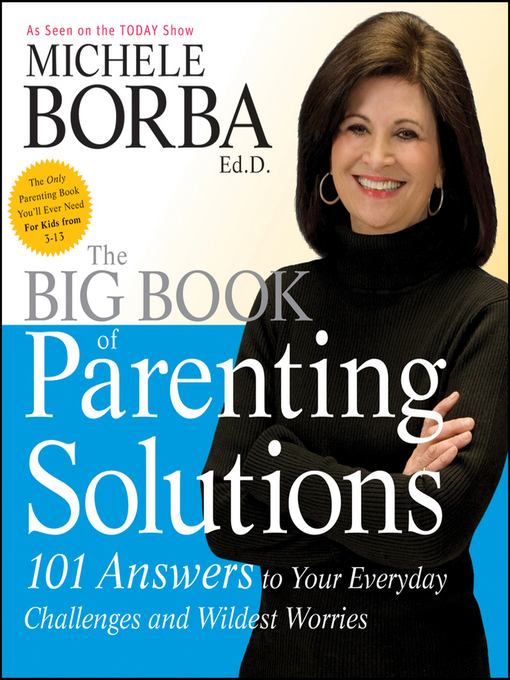What research says on how onlies turn out and parenting advice for raising the fastest growing kid breed. Tips I shared on NBC TODAY
Your Trivia Pursuit question of the day: “What do these famous folks all have in common?”
Cary Grant. Elton John. Chelsea Clinton. Alan Greenspan. Gerald Ford. John the Baptist. Laura Bush. Hans Christian Anderson. Lance Armstrong. Pierce Bronson. Carol Burnett. Walter Cronkite. Leonardo da Vinci. Mahatma Gandhi. Rudi Giuliani. Robert de Niro. Eleanor Roosevelt. Franklin Roosevelt. Barbra Streisand. John Updike. John Lennon. Joe Montana. Charles Lindberg. Issac Newton. Cole Porter. Elvis Presley. Frank Sinatra. Gregory Peck. Ringo Starr. Condi Rice. Alicia Keys. Jean Paul Sartre. Kareem Abdul-Jabbar.
If you haven’t guessed, they’re all only kids and they’re also a growing breed.
There are currently 20 million single-kid families in the US. The percentage of American women having only one child has more than doubled in 20 years to almost one quarter. (Time).
I was asked to share the latest research findings about only kids on the TODAY show as well as well as special tips to raise singletons. Here are a few tips from my TODAY show segment.
Why the New Down-Sizing Family Trend
The single-kid family is the fastest-growing family trend in the U.S. and most of Western Europe and for a number of reasons including these top three:
Recession and economic crunch. The recession has altered women’s child-bearing desires and for good reason. The average child in the U.S. costs parents about $286,050– before college. Sixty-four percent of women polled said that with the present economic crunch they couldn’t afford to have a baby now; 44 percent plan to reduce of delay childbearing.
Single motherhood increasing. A record 4 in 10 (41%) births were to unmarried women in 2008 which is up 28% in 1990. Single moms is a fast growing breed and many are choosing to adopt and remain single.
Delaying motherhood (marrying later, education, career). The percentage of women giving birth for first time at age 35 or older has increased eight-fold since 1970; among women 40 to 44, the birth rate grew 1 percent to 9.5 births per 1000 women-one of the highest rates ever.
Projections show that the number of only children in the U.S. will keep growing and the new trend is the “down-sized” family.
The Benefits of Raising Only Kids
As with every birth order, there are unique pluses and minuses. Here are the top benefits of raising an only according to the research:
- Finances and resources: We can give our onlies more financial advantages because we don’t have to share our bank accounts amongst other siblings. Those benefit of extra financial resources for tutoring and experiences and that one-on-one time seems to make a big difference in how only kids turn out.
- Greater parental attention and energy: Only children do have a huge advantage in the self-esteem and confidence department because they have all their parents’ attention and energy and don’t have to divvy up their parent’s love to sibs.
- Higher academic attainment: Singletons have an edge when it comes to achievement, standardized tests, SATs and intelligence. A 20-year study found only kids have higher education levels, higher test scores, better vocabularies, and higher levels of achievement. The chief reason: we give onlies our undivided attention and talk more one on one so their vocabularies increase –which is an IQ booster. The drawback on this one is that we can put too high of expectations on our “one and only” child. Just make sure you don’t expect this lone offspring to “complete” you just because she is your one and only.
- Closer parent-relationship. No guarantees but for the most part only kids grow up to be happy with closer parent-relationship. (Interestingly enough, anxiety about being the sole caretaker for aging parents once parents’ die is also a top only kid concern.
The Origin of Those Negative Only Kid Stereotypes
Spoiled. Arrogant. Bossy. Selfish. Maladjusted. Lonely. Bratty. Those are just a few terms often used to describe only kids. But where did they come from? Are only kids really doomed?
Turns out all those negative stereotypes about only kids were based on research conducted over 120 years ago by one psychologist, Granville Stanley Hall. Though the 1896 study, “Of Peculiar an Exceptional Children,” proved to be poorly designed (and would be thrown out of psych text books today), it somehow perpetuated a myth that only kids are oddballs and permanent misfits.
The latest studies refute those negative stereotypes of onlies and give a far more accurate as well as positive view that should give parents big sighs of relief.
A study of over 20,000 kindergarteners found that teachers rated students with at least one sibling as better able to form and maintain friendships and get along. But those same researchers just released Part II of that study last week and found that when only kids become adolescents the “lonely” edge decreases. In fact, there was no difference in the social skills of onlies vs. kids with siblings if their parents provided social opportunities.
Parenting Tips to Raise an Adjusted, Happy Only
 Every child needs a boost in some area regardless of family size so singletons are no different than other kids. The key parent question is to ask what your child may be missing because of his or her unique growing up experiences, and then find “fill in” the void with the right opportunities. Here are the top three “issues” and solutions:
Every child needs a boost in some area regardless of family size so singletons are no different than other kids. The key parent question is to ask what your child may be missing because of his or her unique growing up experiences, and then find “fill in” the void with the right opportunities. Here are the top three “issues” and solutions:
1. Dethrone your onlie
Because they do they also stand the risk of acting a bit “entitled” which is a huge peer turn off. So beware that you don’t put your kid on center stage or give him the impression that the world revolves around him (even though in your eyes I’m sure he does).
2. Provide social skill opportunities
Find those social outlets for your child to be with other kids so she can learn those essential friendship-making traits: play dates, playgroups, a babysitting cooperative, scouting, church groups, family gatherings with cousins, holidays with friends, neighborhood kids, T-ball, summer camps, Boys and Girls Clubs, and sleepovers are just a few of many options to be on the alert for.
3. Help your child learn to solve conflicts
Onlies might have trouble solving conflicts, handling teasing, negotiating or compromising because they don’t have brothers and sisters to help them learn those skills in those day-to-day tiffs and teases. So try not to raise your only child with kid gloves. And make sure you find ways to help your child resolve conflicts and negotiate hot-button issues so she has those skills to handle the real world.
4. Stretch unique talents and strengths
If you’re a parent of any only kid, I’d advise you to just do what every other parent should do: reflect on our child’s own unique talents, interests, passions, personality and temperament. Then look at the activities and interests she currently partakes.
Do they match her natural nature? Will they stretch his unique talents and strengths? Or are those activities more in sync with what you hope she will enjoy or your own talents, strengths, skills or memories?
Help your child become his own person. After all, your son or daughter deserves that privilege – as does every child.
Breathe: The Kids Will Be All Right (Really!)
If you’re wondering if onlies should be treated any differently that kids from multi-sibling families, relax. The single greatest correlation of what raises an emotionally healthy kid has nothing to do with birth order or family size. What matter more in how our kids turn out is our parenting style and how we interact with our kids.
Dr. Michele Borba, Parenting Expert
 I am an educational psychologist, parenting expert, TODAY show contributor and author of 22 books.
I am an educational psychologist, parenting expert, TODAY show contributor and author of 22 books.
You can also refer to my daily blog, Dr. Borba’s Reality Checkfor ongoing parenting solutions and late-breaking news about child development.
Follow me on twitter @MicheleBorba
You can also find dozens more research-based and practical tips in my latest book, The Big Book of Parenting Solutions. Portions from this blog were from the chapter “Only Child.”
Resources:
Cost of raising a child from U.S. Department of Agriculture: Quoted by Lauren Sandler, “The Only Child: Debunking the Myths,” Time Magazine, Jul 08, 2010
Survey from Guttmacher Institute: a leading reproductive-health: Quoted by Lauren Sandler, “The Only Child: Debunking the Myths,” Time Magazine, Jul 08, 2010
Pew study on American motherhood shows both increase in number of larger families and number of only children; share of births to Hispanic women (birth to 1 in 4 babies) white motherhood declined by 12% since 1990; births to Asian others also increased, African-American families stayed stable) based on research demographer, Samuel Preston, U. Pennsylvania by Lauren Sandler, “The Only Child: Debunking the Myths,” Time Magazine, Jul 08, 2010
Study of 20,000 children, D. Downey & D. J. Condron, “Playing Well With Others in Kindergarten: The Benefits of Siblings At Home” Journal of Marriage and Family. 2004, 66, pp 333-350.

